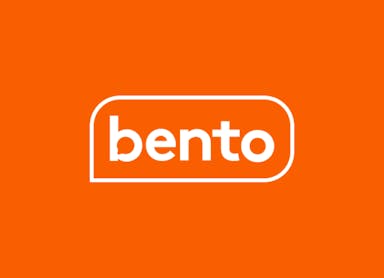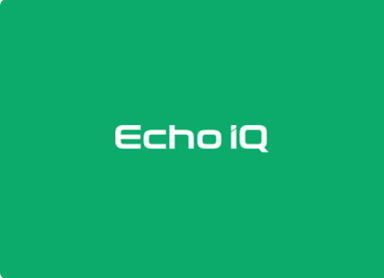
Overcoming Audit Fatigue: Causes & Mitigation Strategies Explained
Anna Fitzgerald
Senior Content Marketing Manager
Rob Gutierrez
Senior Cybersecurity and Compliance Manager, CISA, CCSK, CMMC RP
Audits are an important part of maintaining compliance and proving your organization’s commitment to security and data protection. But for many organizations, the process can feel like an endless cycle of readiness work, evidence collection, and stress—leading to what’s known as audit fatigue.
In this blog, we’ll explore what audit fatigue is, its common causes, and actionable strategies to mitigate it.
What is audit fatigue?
Audit fatigue refers to the frustration, redundancy, and operational burden that organizations often experience when faced with frequent or overlapping audits or assessments. It’s a common challenge for businesses operating in highly regulated industries or handling sensitive data. These businesses are usually required or expected to demonstrate compliance with multiple frameworks and regulations to provide assurance that they have achieved a baseline of security and are capable of protecting sensitive data.
For example, almost 70% of service organizations need to demonstrate compliance with at least six different frameworks across information security and data privacy.
Typically, organizations that take a manual approach to compliance experience audit fatigue as stakeholders across departments and teams are pulled away from core activities again and again to support repetitive, tedious compliance tasks such as collecting evidence.
Symptoms of audit fatigue include:
- Strained resources
- Burnout among employees
- Increased human error
- Missed deadlines
- Decreased compliance readiness
- Lack of security culture
When left unaddressed, audit fatigue can impact morale, productivity, and your organization’s ability to meet regulatory requirements. It can also make your organization more vulnerable to cyber risks, insider threats, and data breaches.
Recommended reading

Audit Management 101: How the Right Process and Tool Can Streamline Compliance
The primary causes of audit fatigue
Several factors contribute to audit fatigue, but they often boil down to the three key issues below.
Frequent audits
Organizations that comply with multiple standards, such as SOC 2, ISO 27001, HIPAA, CMMC, and more, may need to undergo multiple audits annually or even more often to maintain compliance. Managing these audits can be time-consuming and resource-intensive.
An audit for a single framework requires you to establish an audit timeline, create and distribute policies for employee review, collect evidence, answer any follow-up requests or questions from the auditor, remediate any deficiencies, and more. Completing these activities not just once, but on a recurring basis, can take up a significant percentage of time for the individual or team responsible for compliance.
Manual processes
In Hyperproof’s 2024 IT Compliance Benchmark Report, 81% of compliance professionals said they are burdened with administrative tasks and spend on average 30% or more of their time at work on manual processes.
If your compliance program consists of manual processes, then you’ll have to rely on spreadsheets, emails, and scattered documentation to get audit-ready. These inefficient and disparate tools not only make audit preparation tedious and time-consuming — they also create bottlenecks, increase stress and complexity, and introduce human error. This makes it more difficult to build, maintain, and scale a compliance program with manual processes alone.
Duplicate work resulting from a lack of visibility
Without a unified platform to manage controls, evidence, and remediation tasks, organizations lack visibility into the process and efforts made by various teams to get compliant and audit-ready. This typically results in duplicate efforts across audits, leading to frustration and wasted resources.
Case study

How Bento Saved Hundreds of Hours and Delivered ROI By Eliminating Manual Compliance with Secureframe
6 ways to mitigate audit fatigue
Below are five practical strategies to ease the burden of audits and maintain compliance with confidence.
1. Invest in compliance automation
Compliance automation platforms like Secureframe simplify the audit process by centralizing tasks, evidence, and controls in one place and automating workflows for evidence collection, risk assessments, policy management, and more to make them more efficient, reliable, and scalable. This technology improves visibility into your security and compliance posture and reduces the amount of manual work required to get and stay audit-ready.
Recommended reading

Why Compliance Automation is a Strategic Advantage for Modern Organizations
2. Automate evidence collection
Rather than require someone to manually dig through files, emails, and logs to collect evidence or email colleagues from across the organization to send them files or screenshots, an automation tool can streamline the collection of audit evidence by connecting directly to your tech stack. It pulls the necessary data from various sources, compiles it, maps it to relevant compliance requirements and controls, and keeps everything up-to-date, often in real-time. This significantly reduces manual effort and ensures data is accurate and up-to-date.
Having this centralized, single source of truth for your security compliance data will not only save you time and streamline the process of collecting and transferring evidence to your auditor — it will also make you more effective by enabling you to focus on areas where you’re not secure or compliant rather than just compiling evidence.
Recommended reading

A Guide to Automated Evidence Collection for Compliance
3. Implement continuous monitoring
Continuous monitoring allows you to track the effectiveness of your controls year-round, making it easier to demonstrate compliance when it’s time for an audit. By continuously monitoring your tech stack to identify, track, and document threats or non-conformities, you'll also be able to fix issues proactively instead of scrambling to put out fires right before your audit. This is essential for decreasing stress and providing peace of mind going into an audit.
Automating continuous monitoring makes the process more cost-effective, consistent, and efficient. This helps organizations maintain a robust security and compliance posture, improving their overall security resilience and reducing the likelihood of cyber attacks.
Recommended reading

The Benefits of Continuous Control Monitoring & How You Can Implement It
4. Map efforts across frameworks when possible
Security and privacy frameworks can often share overlapping evidence and controls. SOC 2 and ISO 27001, for example, have common controls and tests. This can result in organizations wasting valuable time and resources creating independent sets of controls, gathering the same evidence, performing redundant tests, and repeating other activities for multiple audits.
Instead, you can map controls and tests to requirements across these two and other frameworks to eliminate duplicate work and speed up time-to-compliance. Eliminating duplicate efforts in this way can help significantly reduce audit fatigue.
Look for a compliance automation solution that automates as much of the mapping process for you across as many frameworks as possible, especially those that could be in your future, not just for a select few like SOC 2 and ISO 27001. This will ensure you can continue to scale your efforts and reduce redundant work as your compliance program expands.
Recommended reading

Control Mapping: What It Is & How It Can Help Simplify Your Compliance Efforts
5. Consolidate audits where possible
Consider integrating multiple audits into a single, comprehensive assessment. For example, some audit firms offer packages, like a SOC 2 report with a tacked-on HIPAA assessment. That way, organizations in the healthcare sector can easily add HIPAA to the scope of their SOC 2 audit and get both attestations after the audit. This can reduce the readiness work and back-and-forth communications between the organization and auditor, significantly mitigating the likelihood of audit fatigue.
Case study

How Echo IQ Saved $120K in Compliance Costs and Achieved SOC 2 and HIPAA Compliance in Six Months with Secureframe
6. Support your team
Conducting regular training, establishing clear roles and responsibilities, and having expert support available is invaluable for audit preparation. When everyone knows what they’re expected to do and feels supported, the audit process becomes smoother and less stressful.
Having a dedicated compliance manager can be the difference between a successful and unsuccessful audit. If you haven't conducted audits or worked in internal compliance at an organization, understanding the requirements of established frameworks like SOC 2 and ISO 27001 can be challenging. These frameworks often have specific, complex, or overly broad requirements that make it difficult to determine what needs to be implemented. Keeping track of framework changes and how they may apply to your organization adds another layer of complexity. A compliance manager can provide personalized guidance and expertise to help navigate the complexities of compliance.
For organizations without the resources to hire a full-time compliance manager, Secureframe offers a valuable alternative. Our in-house team of compliance managers work closely with customers to understand their unique compliance needs and tailor solutions accordingly. This personalized approach ensures that each customer receives the support they need before, during, and after an audit.

Secureframe also works with several vCISO partner organizations that are great at helping organizations implement security and compliance controls and processes.
Recommended reading

The Value of vCISOs for SMBs: Bridging the Information Security Gap
Say goodbye to audit fatigue with Secureframe
Secureframe is designed to help organizations overcome audit fatigue by streamlining compliance management and audit readiness. Our platform automates evidence collection and other compliance workflows for the most security frameworks out-of-the-box, including SOC 2, ISO 27001, PCI DSS, HIPAA, NIST 800-171, CMMC, and more than 40 others, ensuring organizations can quickly and easily get audit-ready and stay compliant with evolving requirements.
With Secureframe, you can:
- Automate tedious manual tasks like evidence collection to speed up audit readiness
- Gain expert guidance from compliance professionals to ensure you’re audit-ready
- Use AI to automate the process of remediating failing controls, completing risk and vendor assessments, creating and editing policies, answering security questionnaires and more
- Continuously monitor your controls for year-round audit readiness
- Automatically see how the controls and tests you already have in place for one framework map to other in-demand frameworks
- Get real-time insights into your compliance status with our monitoring dashboard
As a result of these and other capabilities, Secureframe users report a range of benefits, including:
- 86% said reduced time and effort maintaining compliance
- 77% said faster and easier audit preparation
- 81% said audits are completed 25% or more faster, with 35% saying audits are completed in less than half the time
Don’t let audit fatigue hold your organization back. To learn how you can use Secureframe to focus on growing your business while staying compliant with confidence, request a demo.
Secureframe was instrumental in our recent successful SOC 2 audit. Secureframe’s user-friendly interface and powerful automation tools streamlined the entire process, from the initial readiness assessment to managing the numerous automated tests…Secureframe truly shines with its exceptional customer support team.Their responsiveness, expertise, and clear guidance kept us confident and on track every step of the way. —William C. Muenchow, VP of Technology, MN Community Measurement
About the UserEvidence Survey
The data about Secureframe users was obtained through an online survey conducted by UserEvidence in December 2024. The survey included responses from 154 Secureframe users across the information technology, consumer discretionary, industrials, financial, telecommunications, consumer staples, and healthcare industries.
Use trust to accelerate growth
FAQs
What are the signs of audit fatigue?
Common signs include employee burnout, missed deadlines and other human errors, strained resources, decreased compliance readiness, lack of a security culture, and a general sense of overwhelm during audit preparation.
Can audit fatigue lead to compliance risks?
Yes, when teams are overworked or processes are inefficient, critical compliance tasks can fall through the cracks, leading to increased risk.
What industries are most affected by audit fatigue?
Industries like healthcare, finance, and technology—where compliance standards are strict and audits are frequent—are often most affected.
Is it possible to eliminate audit fatigue entirely?
While audits are unavoidable, tools like Secureframe and efficient processes can significantly reduce their burden, making compliance manageable and less stressful. Secureframe automates evidence collection, centralizes compliance management, and enables continuous monitoring, making it easier to stay audit-ready year-round.

Anna Fitzgerald
Senior Content Marketing Manager
Anna Fitzgerald is a digital and product marketing professional with nearly a decade of experience delivering high-quality content across highly regulated and technical industries, including healthcare, web development, and cybersecurity compliance. At Secureframe, she specializes in translating complex regulatory frameworks—such as CMMC, FedRAMP, NIST, and SOC 2—into practical resources that help organizations of all sizes and maturity levels meet evolving compliance requirements and improve their overall risk management strategy.

Rob Gutierrez
Senior Cybersecurity and Compliance Manager, CISA, CCSK, CMMC RP
Rob Gutierrez is an information security leader with nearly a decade of experience in GRC, IT audit, cybersecurity, FedRAMP, cloud, and supply chain assessments. As a former auditor and security consultant, Rob performed and managed CMMC, FedRAMP, FISMA, and other security and regulatory audits. At Secureframe, he’s helped hundreds of customers achieve compliance with federal and commercial frameworks, including NIST 800-171, NIST 800-53, FedRAMP, CMMC, SOC 2, and ISO 27001.